Generative AI for Supply Chain: Usage, Expectations & Roadblocks
With the potential for generative AI to transform supply chain operations, leaders are eager to explore its benefits. However, many roadblocks remain on the journey to implementation. Where do supply chain leaders say their organizations currently stand on adoption and use?
One minute insights:
 Most respondents feel that generative AI technology and decision-making processes are still unclear to them.
Most respondents feel that generative AI technology and decision-making processes are still unclear to them. In spite of this, most expect generative AI to be a standard in supply chain within four years.
In spite of this, most expect generative AI to be a standard in supply chain within four years. Respondents primarily plan to use generative AI to supplement customer service, internal knowledge base usage and predictive modeling.
Respondents primarily plan to use generative AI to supplement customer service, internal knowledge base usage and predictive modeling. Respondents primarily plan to use generative AI to supplement customer service, internal knowledge base usage and predictive modeling.
Respondents primarily plan to use generative AI to supplement customer service, internal knowledge base usage and predictive modeling.
While generative AI is rapidly becoming standard in the supply chain community, few are confident in their expertise
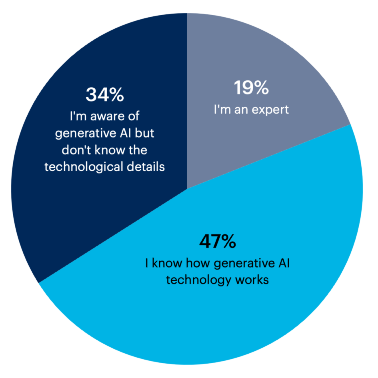
Fewer than half of respondents (47%) say they know how generative AI technology works, and just over a third (34%) say they’re aware of generative AI but don’t know the technological details.
How informed are you about generative AI technology?
I’ve never heard of generative AI 0%
n = 83
Note: May not add up to 100% due to rounding
Is your organization currently deploying generative AI as a part of your supply chain transformation strategy?

34% of surveyed supply chain leaders say they’re already deploying generative AI as a part of their supply chain transformation strategy, and 41% say they plan to.
n = 83
Note: May not add up to 100% due to rounding
How long do you think it will take for generative AI to become standard in the supply chain field?
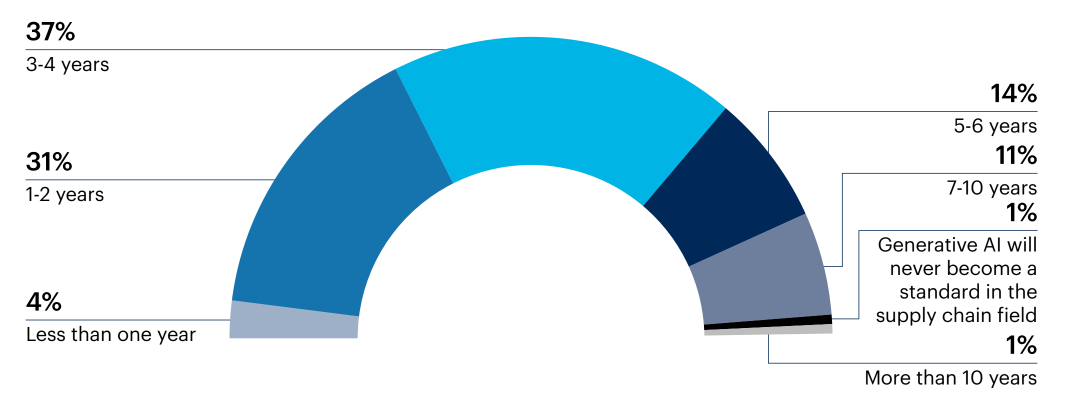
n = 83
Note: May not add up to 100% due to rounding
Question: What would need to change about generative AI in order for it to be effectively applied to your supply chain transformation strategy?
Question asked only to respondents who responded “No, and we do not plan to” or “Not sure” to the question Is your organization currently deploying generative AI as a part of your supply chain transformation strategy?
We would need to address ongoing legal and legislative concerns about the legal issues of the data used/revealed to a model. In addition, we would require the implementation of a MS or Google proprietary instance. Finally we would need to determine the costs associated with training the proprietary models.
Supply chain leaders plan to use generative AI to enhance and supplement an array of existing processes, and expect positive impacts to agility and productivity
When asked about their potential GenAI use cases, customer service supplement (46%), internal knowledge base enhancement (46%) and generating interactive predictive models (42%) were the three most commonly selected options.
How are you using, or how do you plan to use, generative AI as a part of your supply chain transformation strategy? Select all that apply.
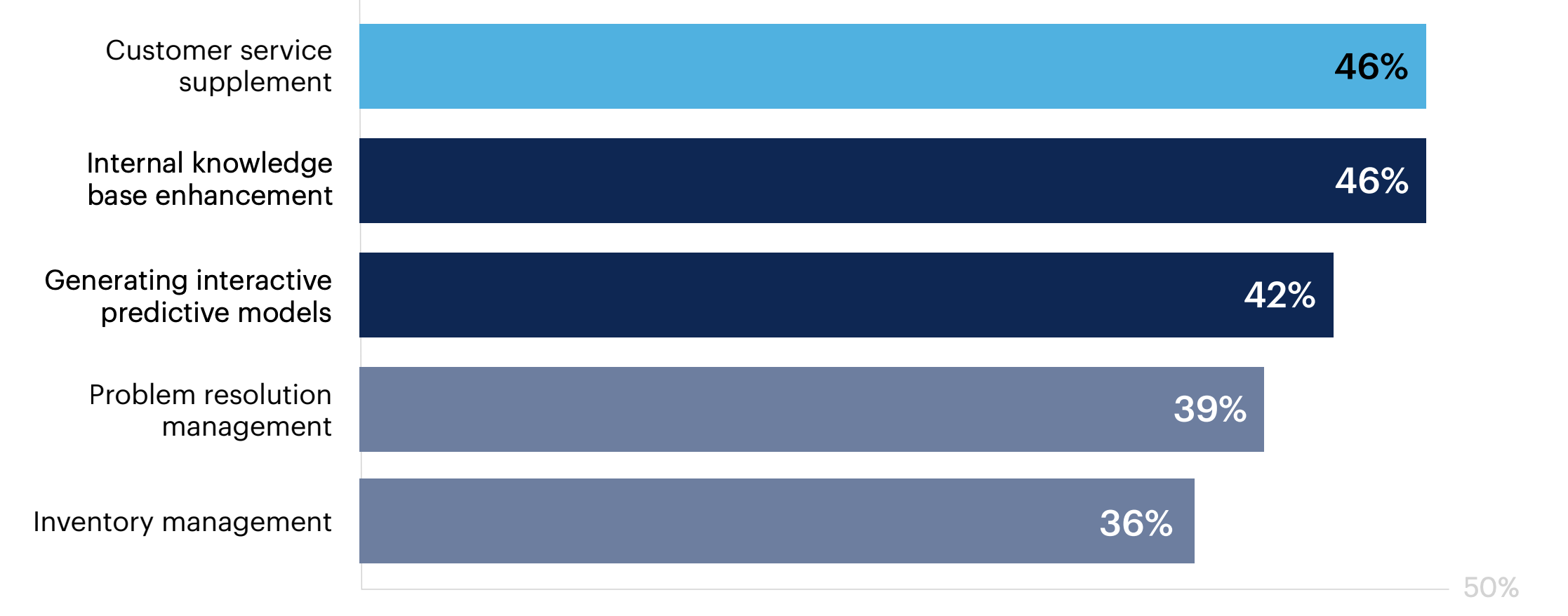
Lower-level task automation 34% | None of these 3% | Other text 0%
n = 74
Note: May not add up to 100% due to rounding
Question asked only to respondents who responded “Yes” or “No, but we plan to” to the question Is your organization currently deploying generative AI as a part of your supply chain transformation strategy?
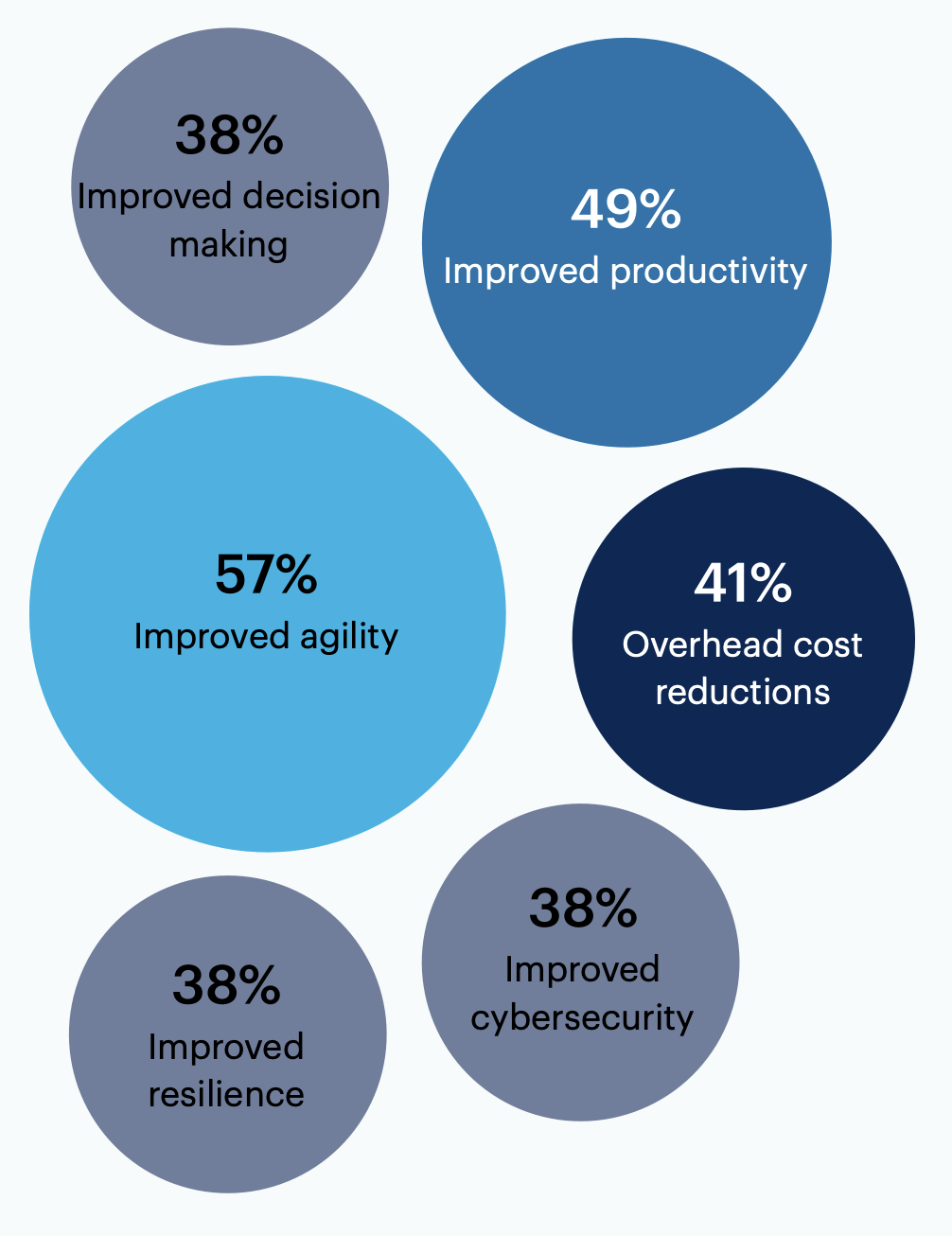
Improved agility (57%), improved productivity (49%) and overhead cost reductions (41%) were the most commonly selected benefits expected from GenAI.
What benefits have you seen, or do you expect to see, from your generative AI deployment? Select all that apply.
Improved customer satisfaction 34% | Improved sustainability 27% | Improved employee morale 24% | None of these 0% | Other text 0%
n = 74
Note: May not add up to 100% due to rounding
Question asked only to respondents who responded “Yes” or “No, but we plan to” to the question Is your organization currently deploying generative AI as a part of your supply chain transformation strategy?
Question: In your opinion, what is the future of generative AI in the supply chain industry?
Ways to connect to internal knowledge. Embedded in the interface with decision automation engines to bring insights and analytics to decision or to find exceptions/impact to manage.
I believe it will play a significant role in generating data but not necessarily in actual decision-making.
Barriers to generative AI implementation include a lack of integration, skills gaps and a lack of transparency into generative AI decision making processes
Supply chain leaders most commonly selected integrations with existing technology (55%), skills gaps (48%) and unforeseen security threats (42%) as the main barriers to generative AI adoption in supply chain.
What do you see as the main barriers to generative AI adoption in supply chain? Select up to 3.

n = 83
End-user skepticism (i.e., lack of trust) 28% | Lack of business use case 24% | Lack of executive interest 22% | Unforeseen regulatory/governance challenges 18% | Other 1% | None of these 0%
*Other includes: “AI hallucinations”
Note: May not add up to 100% due to rounding
Additionally, 89% of respondents say that it is somewhat or very important that generative AI solutions are both transparent and explainable in their decision-making processes.
In your opinion, how important is it that generative AI solutions are both transparent and explainable in their decision-making processes?
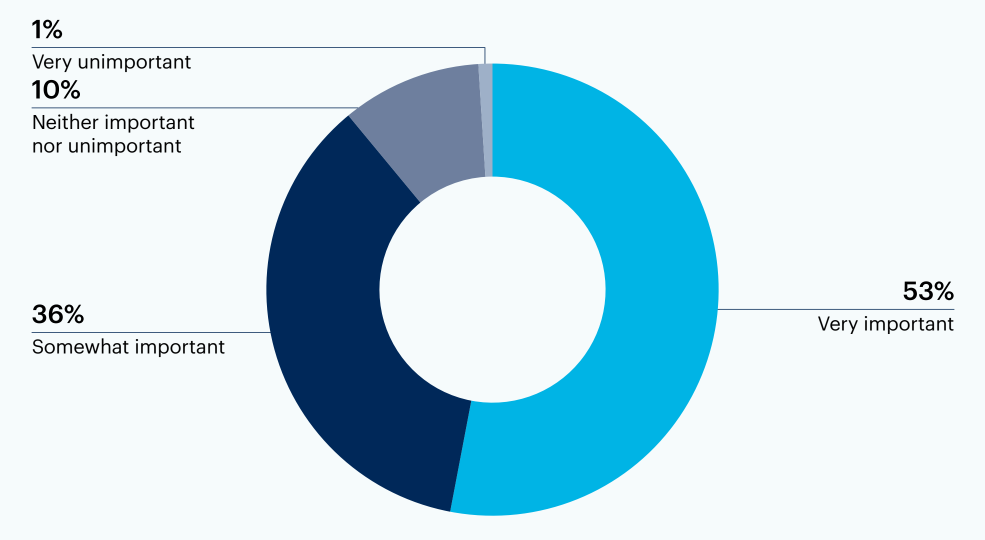
n = 83
Note: May not add up to 100% due to rounding
However, less than half of respondents (47%) agree or strongly agree that generative AI solutions currently meet this requirement.
To what extent do you agree or disagree with the following statement: Generative AI solutions are both transparent and explainable in their decision-making processes.
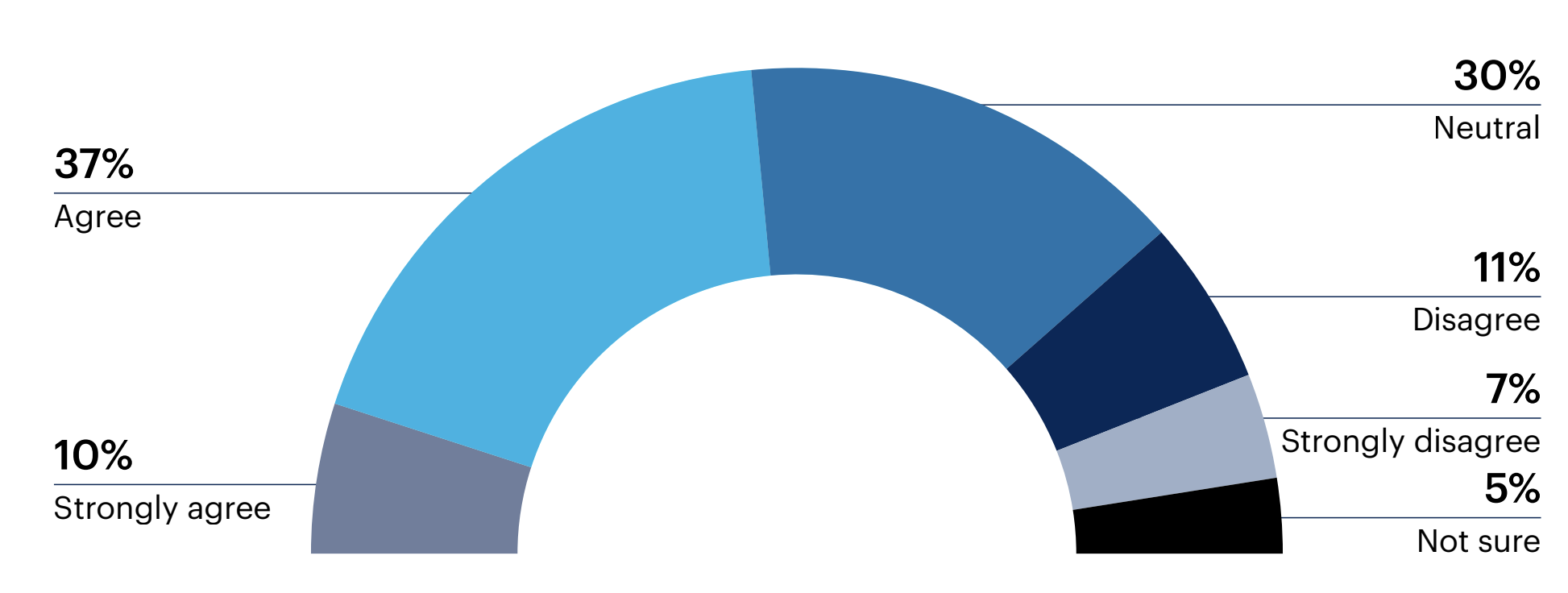
n = 83
Note: May not add up to 100% due to rounding
Question: What concerns, if any, do you have about the ethical implications of using generative AI in the supply chain industry?
We don't know what we don't know - this is highly advanced technology that could easily have ethical implications that we are unaware of today. We need to be diligent in our approach.
I'm not sure that generative AI can truly address the qualitative, subjective concerns that are always present in ethical Supply Chains, e.g., ESG, conflict minerals, human trafficking, supplier diversity, etc.

Want more insights like this from leaders like yourself?
Click here to explore the revamped, retooled and reimagined Gartner Peer Community. You'll get access to synthesized insights and engaging discussions from a community of your peers.
Respondent breakdown
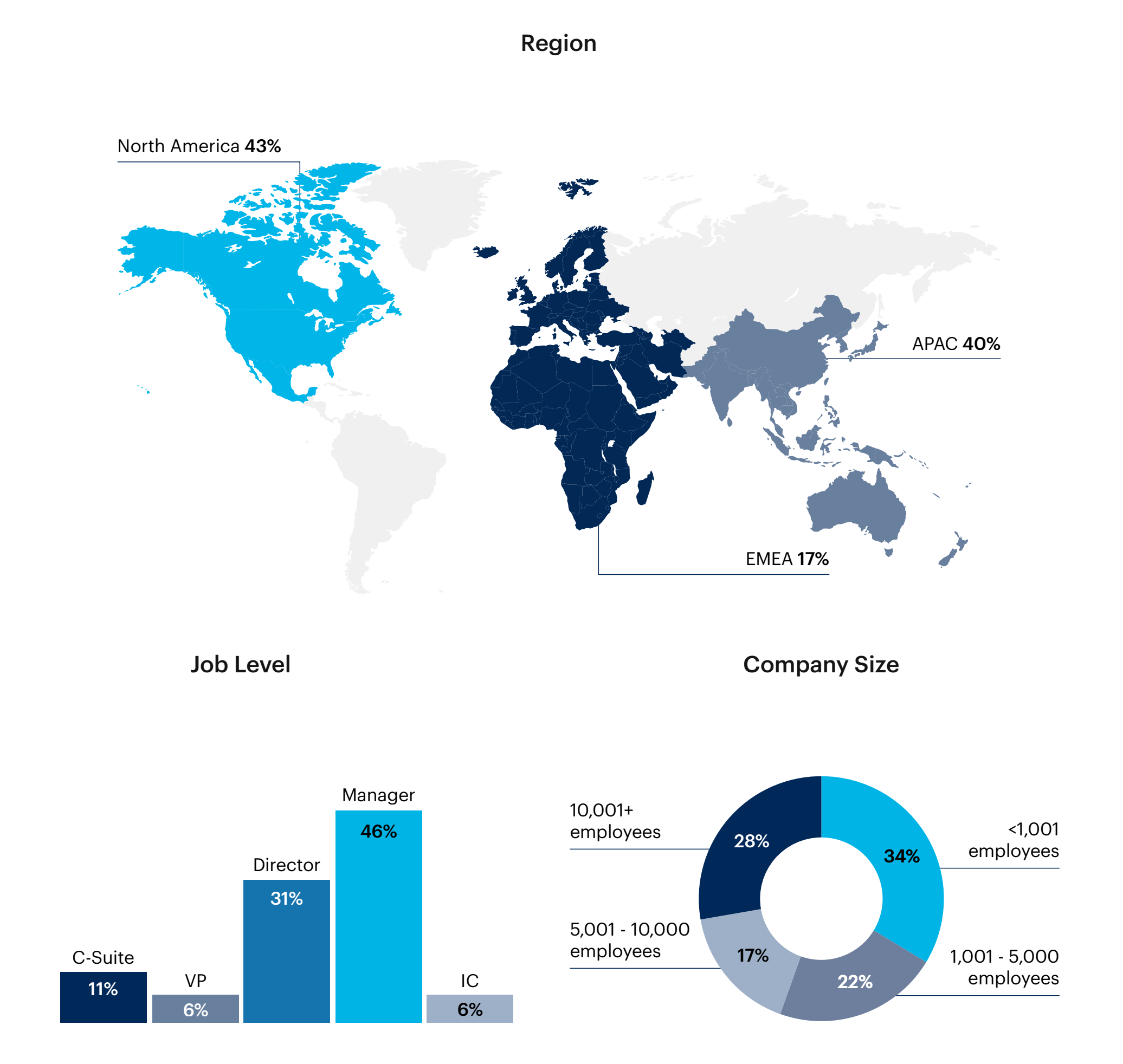
Note: May not add up to 100% due to rounding